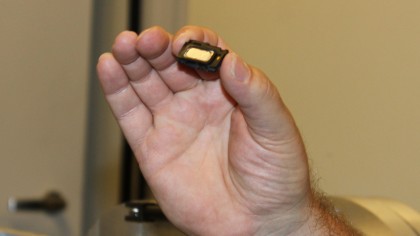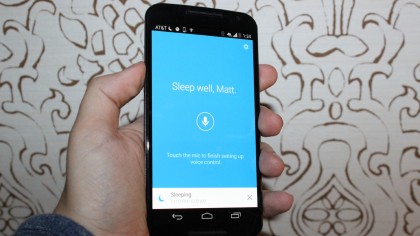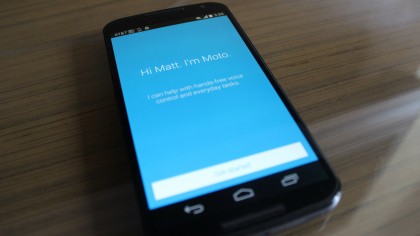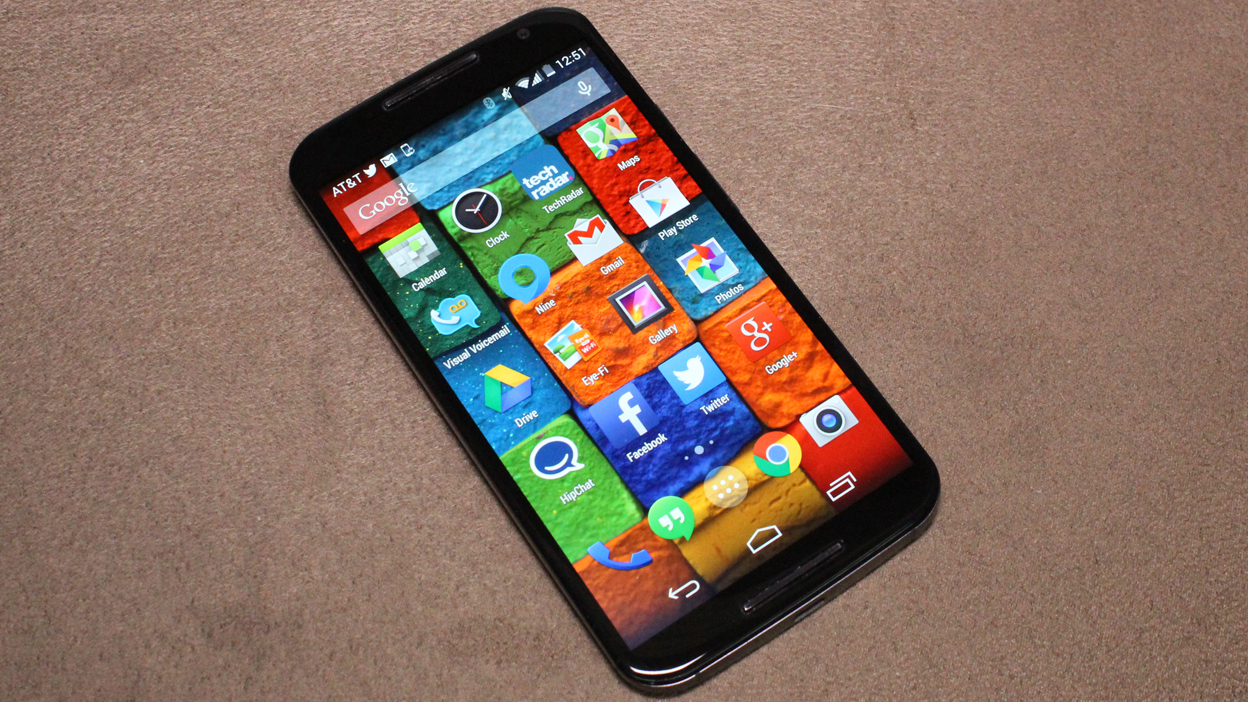Why you can trust TechRadar
Moto X 2014's specs, like its larger display size, complement the fact that it's no longer the runt of the Android litter. Its Qualcomm Snapdragon 801 processor is identical to the 2.5GHz quad-core chip that's found at the heart of the LTE-equipped Galaxy S5.

Motorola also answers Samsung's graphics performance with the same Adreno 330 GPU at 578 MHz and its memory with a healthy 2GB of RAM. The new Moto X isn't an also-ran when it comes to the most important specs. It's snappy performance backs this up even when all of our favorite apps, photos and video are clogging the internal storage.
There's a caveat: you can only fill up the Moto X so much because you won't find a micro SD card slot anywhere. Expandable storage isn't a part of the Moto X like it is on the Moto G 2014 and the earlier Moto G 4G model. You'll have to contend with the 16GB and Moto Maker-exclusive 32GB internal configurations.

Also missing is any sort of fingerprint sensor, heart rate monitor (not that you really need that) and waterproof seal. It doesn't measure up to the IP67 rating of many Android smartphones, so it's not water resistant up to 30 meters for an hour. Instead, it's just "splashproof." It's more than the leather back that's delicate in wet conditions.
Moto X did get the speakers right where others often fail. Its front-facing bottom grill projected music the right way - forward - not down at the ground, and its four microphones for voice calls and noise canceling reduced background noise to appropriate levels in all our test calls.
Interface and apps
Google may have sold Motorola to Lenovo, but the company is still dedicated to providing a pure Android experience that helps its phone contrast with devices from Samsung and HTC. You won't find TouchWiz or Sense changing the experience with a wonky overlay.

Moto X's Android KitKat 4.4 interface (now upgraded to Android 5.0) is much the same as ever save for the Google Now Launcher, a few fresh Motorola-branded apps and some carrier-loaded bloatware depending on your provider. Once again, the aforementioned Moto Display shows up when the display is off, providing a discreet and battery-saving method of peeking at notification icons.
Moto Assist takes driving seriously by reading text messages aloud while you're on the road. It also knows when to keep quiet without disruptive noises during meetings or when you're ready for bed. The next day, it wakes up when you wake up, according to your schedule.

Moto Actions takes advantage of the Moto X's IR emitters that resemble the sensor-spotted Amazon Fire Phone. The built-in app recognizes hand motions from all directions to turn on the Moto Active Display, silence calls and a snooze alarms with a simple wave. Just hop out of the shower and want to know the time? Look no further than Moto Actions. That's really convenient for a phone that's only splashproof.
Moto Voice builds upon Google Now by letting you change the always-listening voice prompt. Instead of the "Okay Google Now" command that seemed futuristic in 2013, the new Moto X lets you use custom phrases - everything from "You there Moto X?" to "Wake up buddy!" were among the Motorola-suggested examples. But I preferred the Motorola staffer / X-Men fan who used the prompt, "Okay Professor X" to get things started. And, again, unlike Siri, there's no need to hold down a button or have the phone plugged in to get the attention of Moto Voice.

Outside of the main Moto suite is Connect, a way to bridge the messaging gap between your Moto X smartphone and computer. It delivers text messages to a Chrome browser extension, though not as reliably as third-party apps like MightyText. I'm still hoping that Google one day brings SMS to Hangouts on a PC. Apple aced this with iMessages among its device owners two years ago and is further building upon it (by relaying all texts) with Mac OS X Yosemite and iOS 8. Connect is hopefully a stopover to something broader from Google.
Everything else about Motorola's Android setup is untouched next to the Nexus 6, and for the most part, this pure interface is really appealing. It does mean that Google's quick settings for brightness, Wi-Fi and Bluetooth are buried behind one and two extra steps compared to Samsung's pull-down menu. I really hate having to adjust the brightness outside with a swipe down, a poke at the left quick settings button, a stab in the dark at the brightness grid label and a feel for the brightness slider. Even with this, pure Android is a lighter and cleaner alternative in all other cases.
Since launch the Moto X has been updated to Android Lollipop and that's brought a raft of changes and improvements, including a new look, smart lock screen notifications which are intelligently ranked, a redesigned multi-tasking screen and more.
Current page: Specs, performance and interface
Prev Page Introduction, display and design Next Page Camera
